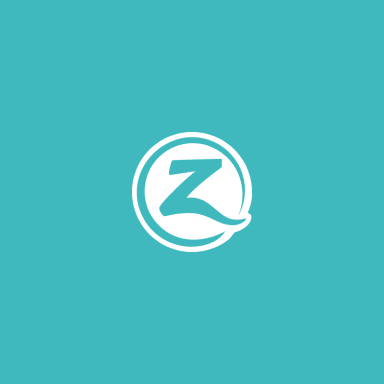Publishing a book can help you get recognized as an expert and may bring in income. But how can you get a book published? Here are three options along with the pros and cons of each.
There are many options for would-be authors to publish a book today. No longer are you consigned to sending your manuscript to an agent in hopes that she likes your book well enough to pitch it to publishers, and if the book is published, having to give the agent a share of your royalties. Of course, the traditional path to book publishing is not closed and is preferable in some cases. But many authors are foregoing the formalities and doing it themselves.
Modern technology makes it affordable, easy, and speedy to self-publish. An author going the traditional route can submit a manuscript to a publisher and have it accepted only to see it hit the bookshelves two years later—well after the information presented has been made obsolete by the passage of time. By comparison, an author publishing on their own can go to press in a month or less.
Before I get into the mechanics of the three different paths to book publication, let’s discuss why you might want to have a book published in the first place.
Why Publish a Book
Every book author has their own reasons for wanting to publish a book. The following six reasons are some of the most common:
- It creates a passive income stream. Not that there is a promise of financial acclaim, but many authors have risen to bestseller status and have seen regular royalties for years as a result of their book’s success.
- A book presents you as a subject matter authority. By putting your name on the cover of a book, you’ll be instantly recognized as an authority on the subject that you write about. Readers have been trained to think of book authors as subject matter experts. Why else would you write a book?
- A book can help promote your business. It doesn’t matter what kind of business you have, if you write a book about your area of expertise, it can serve as a promotional tool for your business.
- It makes a great calling card. Some authors use their books as calling cards. It’s more expensive than the traditional business card, but a subject matter expert can use their book to present themselves as an authority and leverage that status to obtain other important and more lucrative business benefits.
- A book enhances your message. If you are a public speaker, a podcaster, a YouTube personality, or another type of celebrity or publicly recognized individual, a book can help you enhance your message.
- It makes a great lead magnet. Many website owners, publishers, corporations, and other savvy marketers create digital books to entice website visitors to give up their email addresses in exchange for the information of intrinsic value published within the e-book. These digital information products are typically called lead magnets and often allow marketers to build their email lists for marketing future products and services.
These benefits to publishing a book can be realized individually, but more often than not, authors enjoy more than one benefit to publishing a book in their name.
3 Ways to Publish a Book
There are three general ways an author can publish a book today. These include:
- Self-publishing
- Hybrid publishing
- And traditional book publishing
Each of these methods has its pros and cons. Which one is right for you depends on your situation. Let’s look at each one individually.
Self-publishing
Self-publishing is when the author writes a book then undergoes the expense (in both time and money) to publish that book themselves independent of a third-party publisher. As the publisher of your own book, you make all the decisions regarding its content, format, and other publication elements, but you also take full responsibility for the book’s success or failure.
How much does self-publishing cost?
The cost of self-publishing can range from $0 to thousands of dollars depending on whether you do everything else—including formatting and book cover creation—or whether you hire individual service providers to assist you or use a consultant, printer, or publish-on-demand (POD) service.
The options for self-publishers are legion. There isn’t time here to cover them all. In general, you can expect the following expenses for the most common options.
- Book cover artist: $30 to $2,000 depending on skill and your budget
- Book formatter: $40 to $500 (price is dependent on skill and whether you intend to publish in print, digital, or both formats)
- Consultant: A book publishing consultant assists you in make decisions while teaching you about the self-publishing process. This cost is typically in addition to other expenses and can range from $500 to $10,000.
- Printing: Book printing is available for short runs for small and independent publishers, but the downside is you may have an inventory of books that you can’t sell. This typically costs anywhere from $1.50 to $5 per copy depending on size of the book, format (hardcover, mass-market paperback, trade paperback, etc.), and the size of the print run.
- POD = Print-on-demand publishers are usually free but take a percentage of royalties based on the sales channel and the format of the book. Royalties you have to give up range from 15% to 50%.
While self-publishing gives you more control over your book, if you are not good at editing, proofreading, creating book covers, or other aspects of the process, the quality of your product could suffer and you may not sell as many copies. It could also hurt your reputation as an author.
RELATED: Pros & Cons of Self-Publishing
Hybrid publishing
Hybrid publishing is often considered a partnership between the author and the publisher. A reputable hybrid publisher will have a submission and vetting process similar to a traditional publisher, though it may not be as strict. However, unlike traditional publishers, authors have more control over the publishing process and provide input into key details such as book titling, book cover creation, formatting, pricing, and a number of other details.
Many hybrid publishers work on a royalty split. The royalty typically ranges from 30% to 70% for the author. It’s becoming more common for publishers to split royalties evenly (50%).
Hybrid publishing is a great option for first-time authors or authors without knowledge and experience of the publishing process. On the other hand, if you get with the wrong publisher, your books may not sell very many copies.
Some hybrid publishers charge authors for certain services such as editing, proofreading, book cover creation, and other elements of the publishing process. Some of these publishers make their money on these ancillary services, and some overcharge—so buyer beware! As a general rule, the more you pay the publisher for services related to publishing your book, the more you should expect to receive in royalties on the back end. If you end up paying for all of the publishing process and you have to share half of your royalties with the publisher, that’s not a good deal.
Time from manuscript submission to publication varies for hybrid publishers from one month to six months depending on the publisher.
Traditional publishing
With traditional publishing, the author loses control over virtually everything. The publisher may re-title your book, will provide the book cover, have the book formatted, and make all the decisions regarding the publication of your book. In essence, they take on all of the risk involved in publishing. In exchange, they get most of the royalties. First-time authors should not expect more than 15% in royalties.
With today’s publishing climate, large advances are a thing of the past. Some publishers still pay them, but these are advances on royalties, so if your book doesn’t sell enough copies to earn you more in royalties than what the advance covers, you may never see another dime. Authors are also still responsible for the bulk of their own marketing, and many publishers expect authors to come with their own built-in platform. In other words, you need to have a ready-made audience that you can promote your book to. Otherwise, you may not get a publishing contract.
Some traditional publishers will accept manuscript submission directly whereas others want you to have an agent. If you have an agent, you’ll have to give up some of your royalties to the agent, and these typically range from 15% to 20%.
Conclusion
The book publishing business is very creative. Most self-published authors sell fewer than 100 copies of their books, but that’s because they aren’t very good marketers. The most successful self-publishers earn a full-time income, and they keep 100% of the royalties from the sale of the books—forever. They also retain derivative rights such as foreign market rights and the right to repurpose their work in other media. Which route you take to publishing your book depends on your goals as an author and the benefits you are seeking as an author.
RELATED: How to Publish Children’s Books







